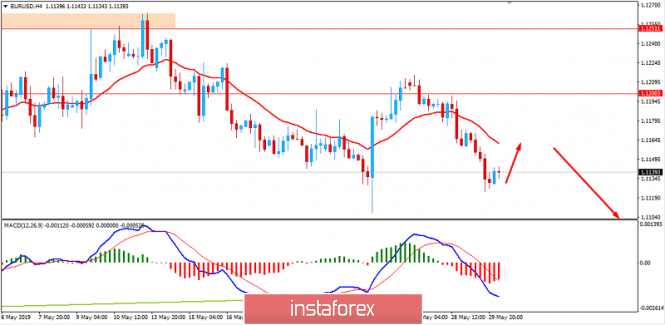The greenback maintains strength while the euro continues its downtrading. The US is expected to sustain momentum further in the coming days.
Eurozone economy is going through hard times in the year 2019. Some economists think that it is unlikely to recover soon. The setbacks for the economy include vulnerabilities from real estate bubbles to high government debt and Brexit. The European Commission recently wrote to the Italian Government asking it to explain the deterioration in the country's public finances. The procedural move was exceptionally delayed until after last week's EU elections, where Salvini's League emerged as a big winner, although eurosceptic forces remain a minority in the new European Parliament. If Italy does not provide by Friday sufficient explanation for its growing debt or accepts that it must limit its spending plans this year, the Commission is likely to formally launch disciplinary steps next week.
Brexit uncertainties are still sustained. Some financial institutions are quite confident about the possibility of Brexit no-deal result. Whether these risks rise further depends on the outcome of the race to succeed May, with some analysts seeing no-deal proponents emboldened by the Brexit party's strong showing at last week's EU parliament election.
The European Central Bank still has its sights set on a return to normal monetary policy, but the task has become far harder over the past year. An economic slowdown in late 2018 has dampened the euro-zone outlook for this year and forced the ECB to say it'll keep interest rates at record lows until at least 2020. ECB policymakers said they had become less confident in predictions for an economic upturn in the second half of the year, and that declining inflation expectations were a worry. Data since then has been mixed as figures this week showed euro-zone confidence unexpectedly rising, but German unemployment climbing for the first time in almost two years. Today Euro momentum is expected to be slower due to holidays being observed due to Ascension Day.
The US dollar is pressurized by the trade war tensions with China and other countries like Japan, Canada, and Mexico. The US central bank has paused rate increases this year amid mixed signals on the strength of the nation's economy. The unemployment rate is at a 49-year low but inflation is running under the Fed's 2% target. Recently, Investors jumped back in to the US stock market for the first time since mid-April by sending roughly $3.7 billion into mutual funds and exchange-traded funds that hold domestic equities last week. The net inflows into US stock funds ended a four-week retreat from the domestic equity market that pulled a net total of roughly $32 billion out of the category. For the year to date, investors have taken a net of $35.8 billion out of funds that hold US stocks.
Trade tensions between the US and China escalated sharply earlier this month after the Trump administration accused China of having "reneged" on its previous promises to make structural changes to its economic practices. The US later slapped additional tariffs of up to 25% on $200 billion of Chinese goods, prompting Beijing to retaliate.
Now let us look at the technical view. The price managed to sustain the bearish momentum after rejecting off the 1.1200 area again. After the bearish slowdown, the price is expected to pullback higher towards 1.1150 i.e. the dynamic level of 20 EMA resistance before its slowdown . As the price remains below the 1.1300 area, the bearish bias is expected to continue.

